LAB REPORT
Science and Technology Making Headlines
Oct. 28, 2016

An artist's illustration of asteroids, or near-Earth objects. Credit: ESA - P.Carril
Avoiding extinction
Sixty-five million years ago, a catastrophic impact forever changed the environmental landscape of Earth -- and there was no way to see it coming. This Earth-bound asteroid -- or maybe several -- changed the course of millions of years of evolution, altered the composition of our atmosphere and the geology.
To prevent a similar event, we need to be prepared. Megan Bruck Syal, postdoctoral researcher at Lawrence Livermore National Laboratory, works on the Asteroid Impact and Deflection Assessment (AIDA) -- which, for the first time, will test how effective a kinetic impact mission would be in altering the course of an Earth-bound asteroid.
“It’s not a matter of if an asteroid will impact again, but when,” Bruck Syal said. “Planetary defense began to be an issue when more and more near-Earth asteroids began to be discovered.”
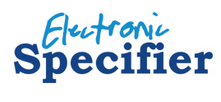
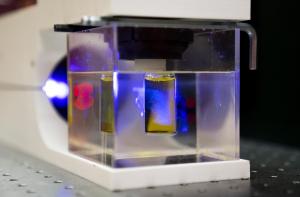
LLNL postdoc James Oakdale holds up the resin used in 3D-printed target production. Photos by Julie Russell/LLNL
3D printing packs some punch
Advanced 3D printing promises to redefine manufacturing in critical industries such as aerospace, transportation and defense, and now, Lawrence Livermore National Laboratory is exploring the use of 3D printing to achieve unprecedented flexibility in producing "on-demand" targets for testing how materials behave under extreme conditions.
Through an additive manufacturing process, a team of LLNL researchers led by Juergen Biener has fabricated the first millimeter-sized, low-density foam reservoir targets with nanoscale features for material strength tests at the OMEGA laser in Rochester, New York.
They are the first group to make precision macroscopic parts using the process. The research on Omega began to allow transferring the same technology to shots on the National Ignition Facility (NIF), where similar components are needed to improve the performance of future targets.

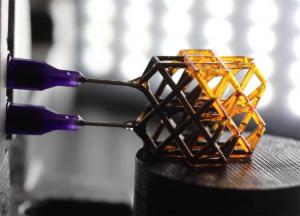
LLNL researchers were part of a team that demonstrated a bi-material microlattice structure, 3D printed from polymer and a polymer/copper composite material, that can flex inward.
Honey, I shrunk the metamaterials
Most solids expand under the effect of heat and in effect the same quantity occupies more space than it did previously.
While there are some materials in nature that buck the usual thermodynamics and behave differently under very specific circumstances, they are rare. But a team of Lawrence Livermore engineers has now constructed, using 3D-printing, a new “metamaterial” that shrinks when heated.
The team used 3D printing to manufacture 3D structures using stiff copper and elastic material. They created tiny, star-shaped structures out of interconnected beams, or trusses. The structures, each about the size of a sugar cube, quickly shrink when heated to about 540 degrees Fahrenheit.
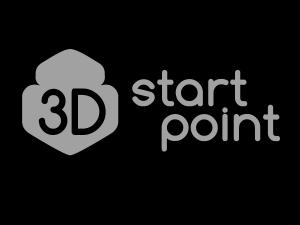

Lawrence Livermore National Laboratory (LLNL) engineers Eric Duoss (left) and Tom Wilson use an additive manufacturing process called direct ink writing to develop an engineered “foam” cushion. Photo by George Kitrinos/LLNL
Heading off serious injury
Lawrence Livermore researchers have partnered with Autodesk to make a better sports helmet to help prevent injuries. Recently, there has been a decline in students trying out for youth football teams because of the risk of injury. Concussions are at an all-time high.
LLNL and Autodesk have multiple objectives: the helmets need to be lightweight, have a certain cost, be very durable, have a certain thickness level and can be compressed or disperse impact.
LLNL brings to the table several key technologies, such as additive manufacturing, material modeling and architected design (arranging materials at the micro and nanoscale through computational design) for the helmet project.

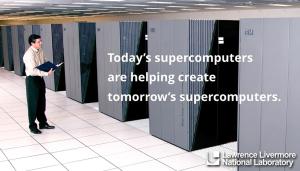
ASML is tapping Lawrence Livermore expertise in supercomputing and laser plasma physics to improve the performance of the light source for extreme ultraviolet (EUV) lithography, which is used to make microchips for the semiconductor industry.
Chipping away at next generation superconductors
Lawrence Livermore National Laboratory and ASML Holding NV have successfully established plasma simulation capabilities to advance extreme ultraviolet (EUV) light sources toward the manufacturing of next-generation semiconductors.
Under a cooperative research and development agreement, ASML is leveraging LLNL’s expertise in lasers and plasma physics and the ability to perform complex, large-scale modeling and simulation using high-performance computing (HPC). These combined resources will enable efficient and economical testing of new approaches targeted at further optimizing conversion efficiency, increasing source power and minimizing tin debris.
ASML’s San Diego R&D and manufacturing facility specializes in the production of light sources used within microlithography scanners.





